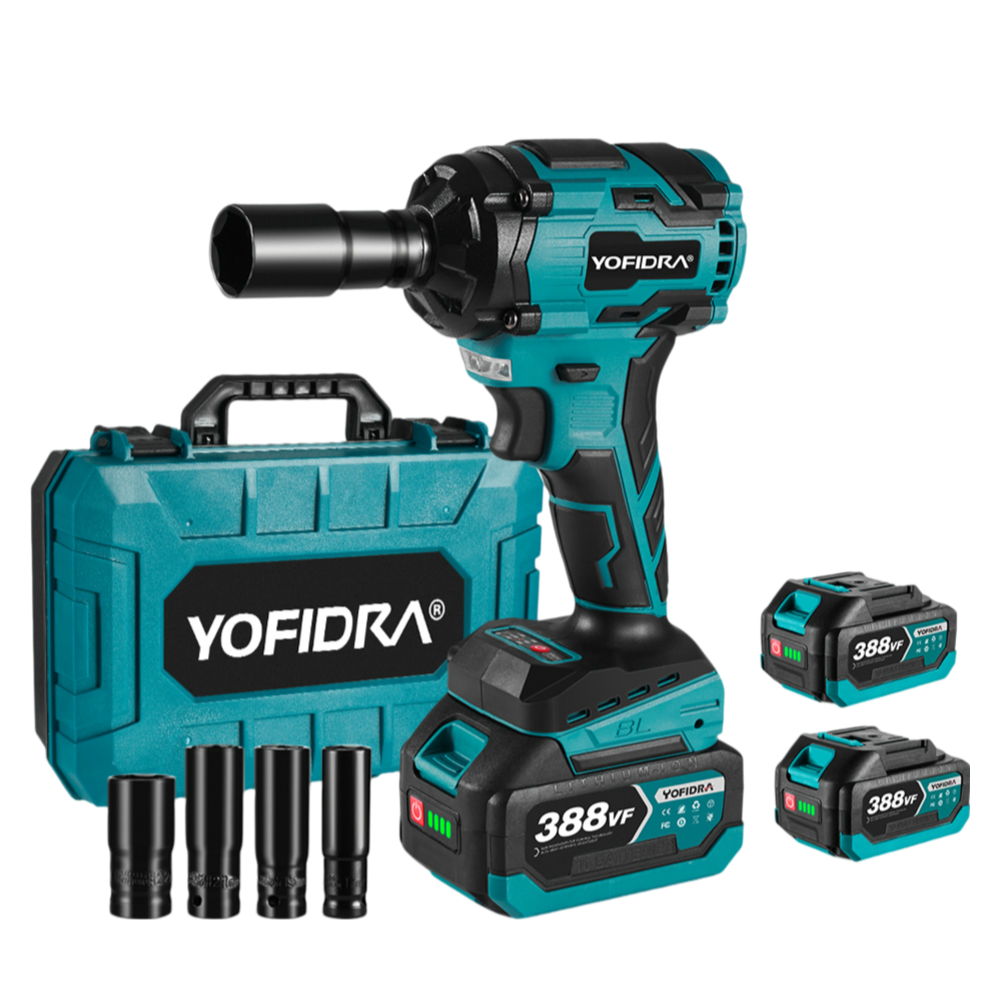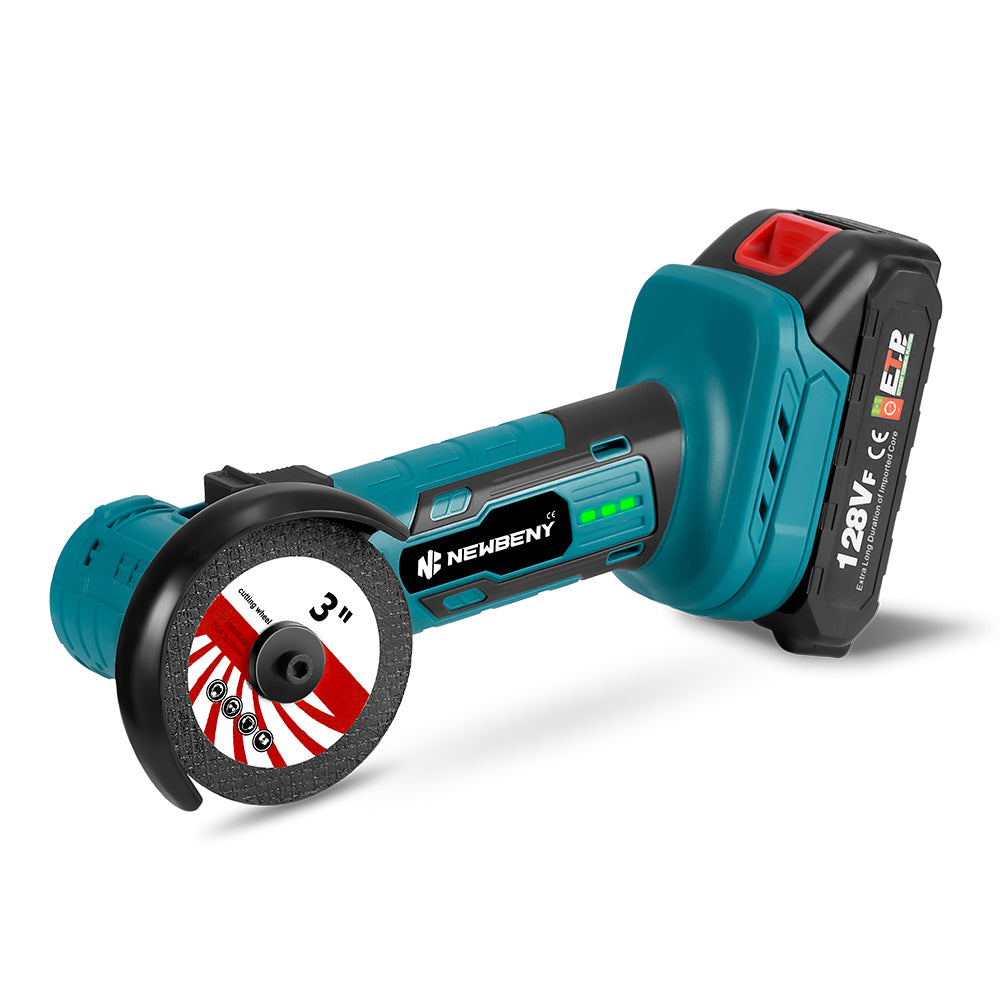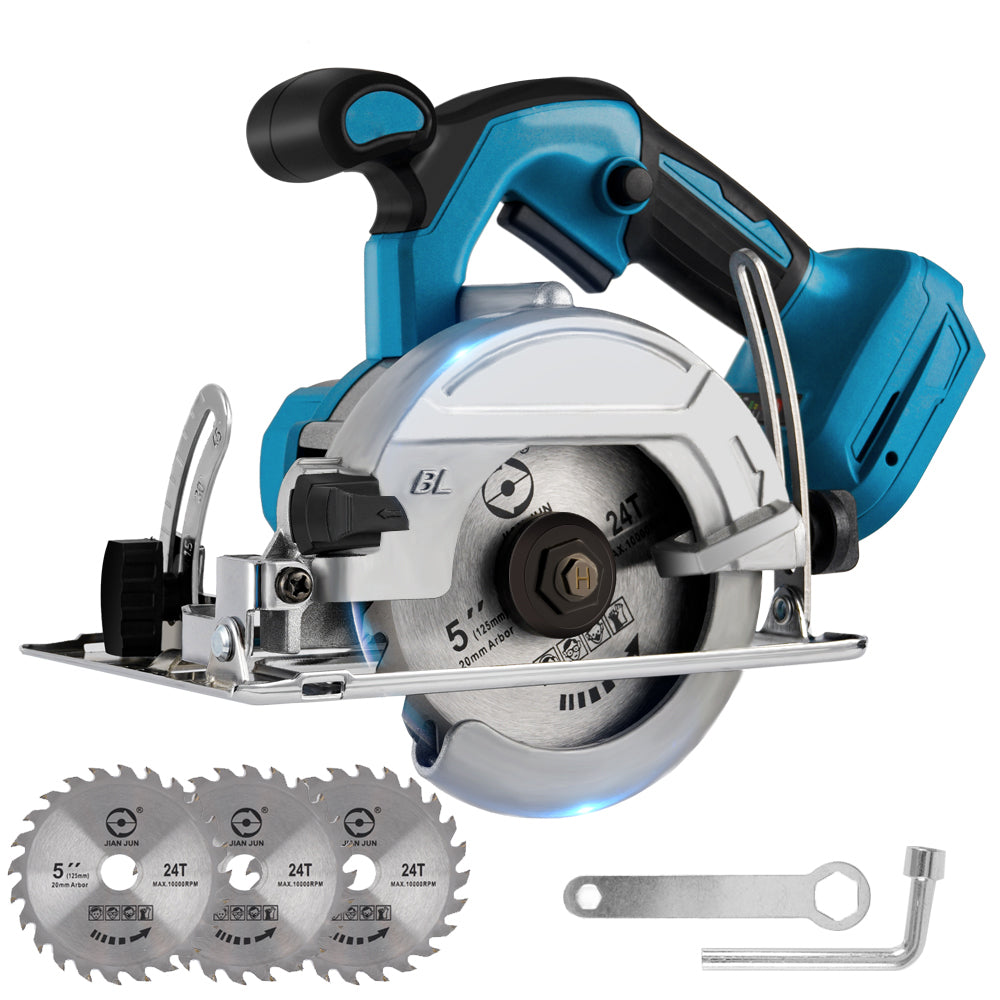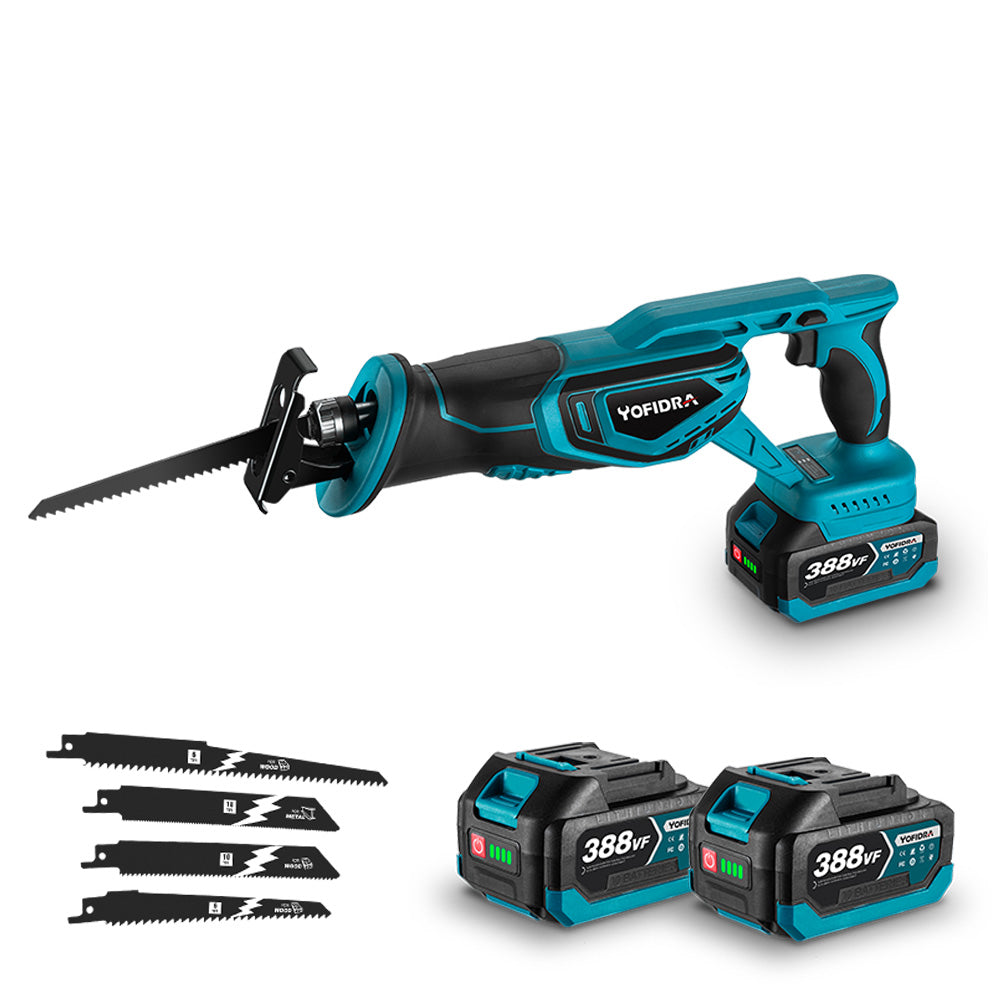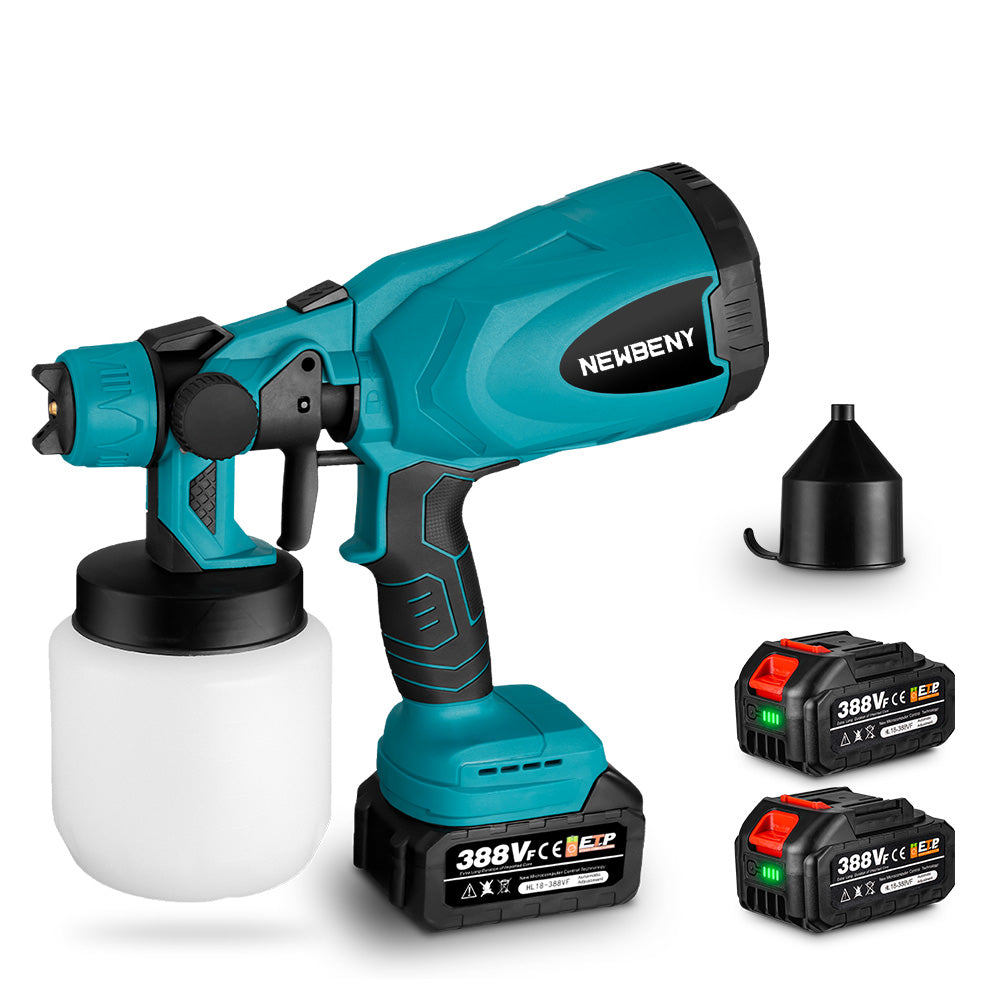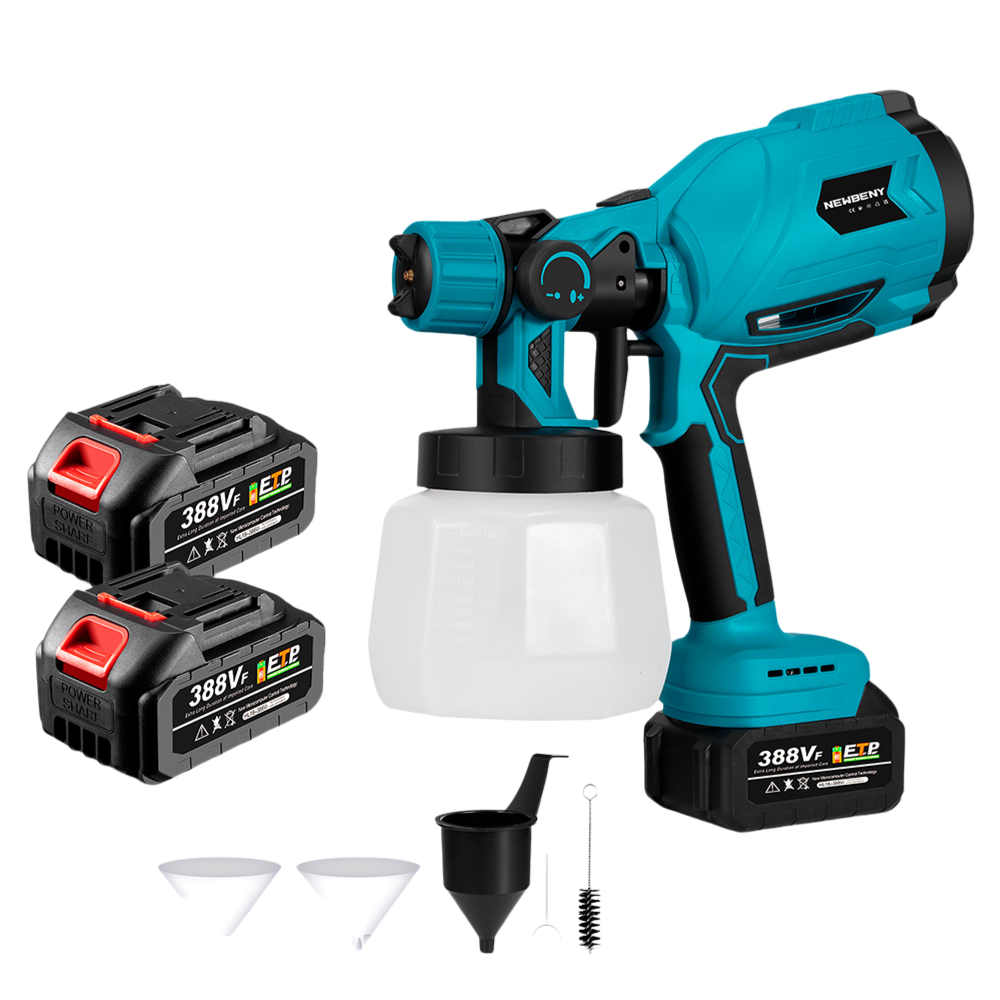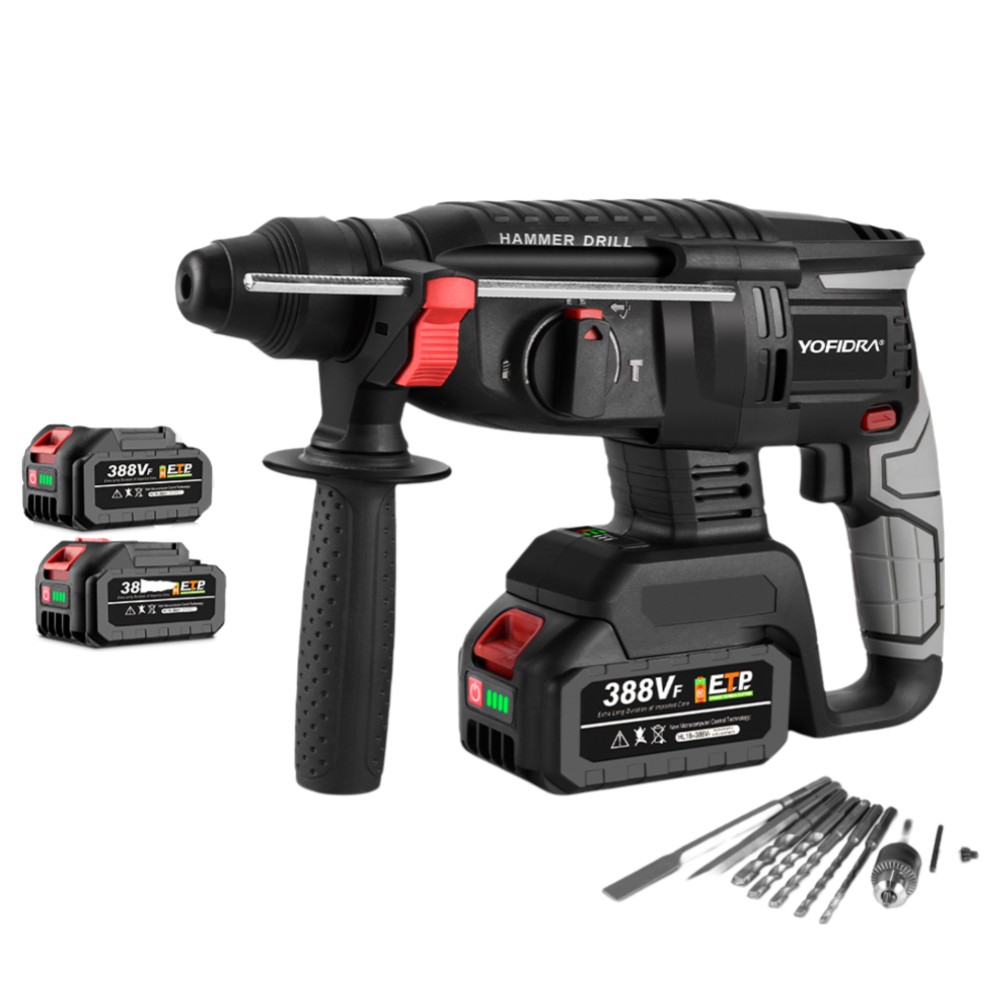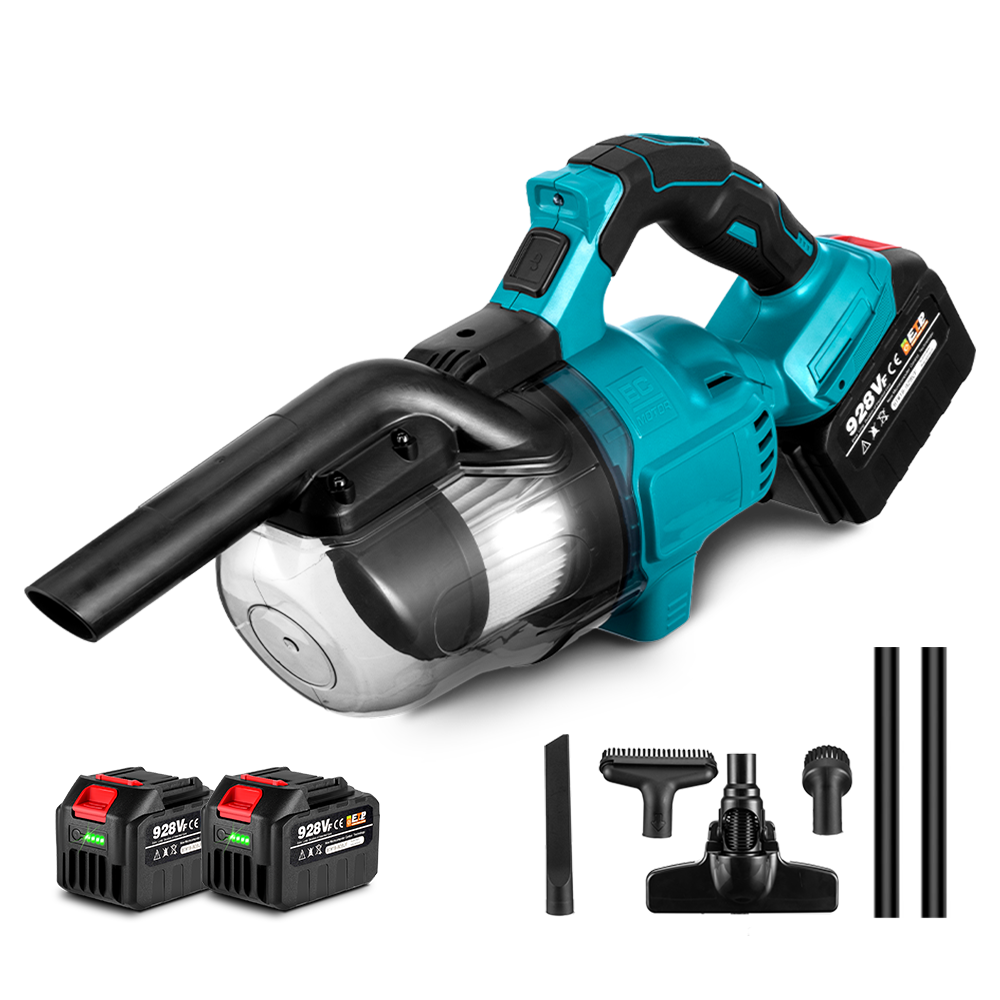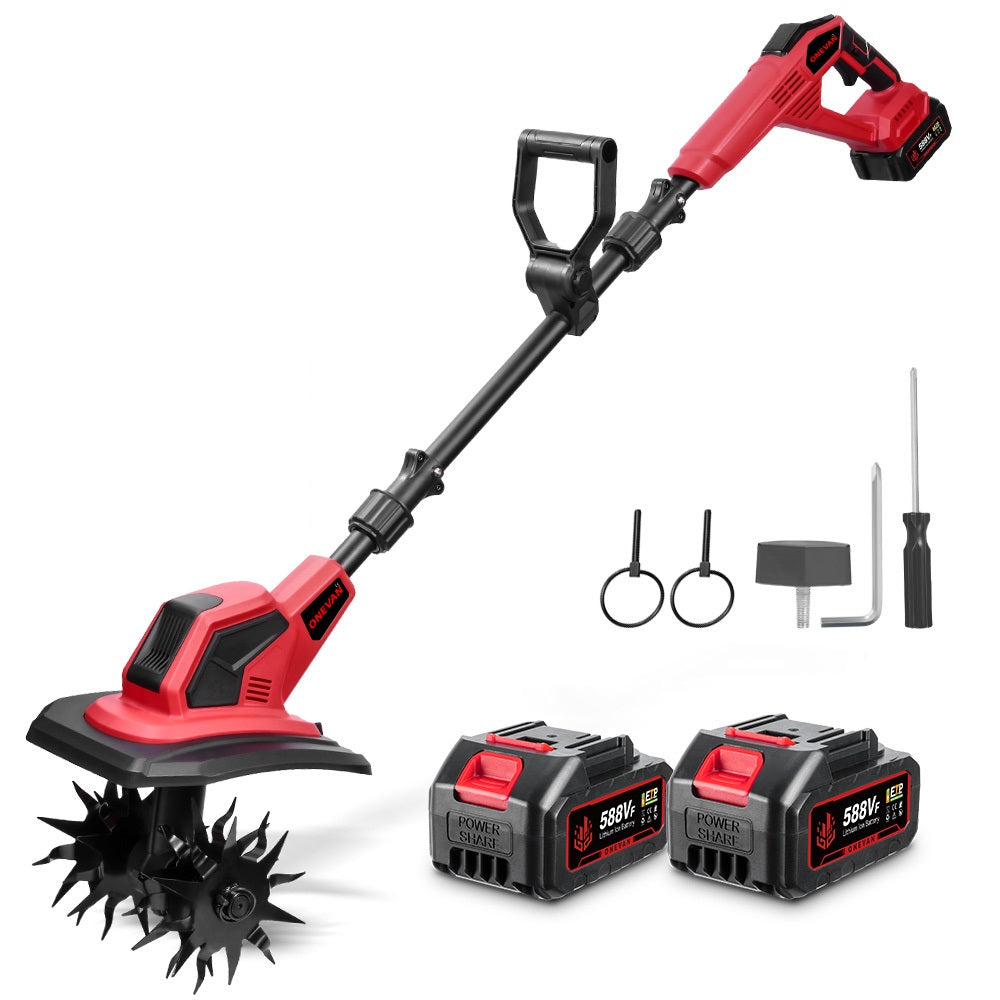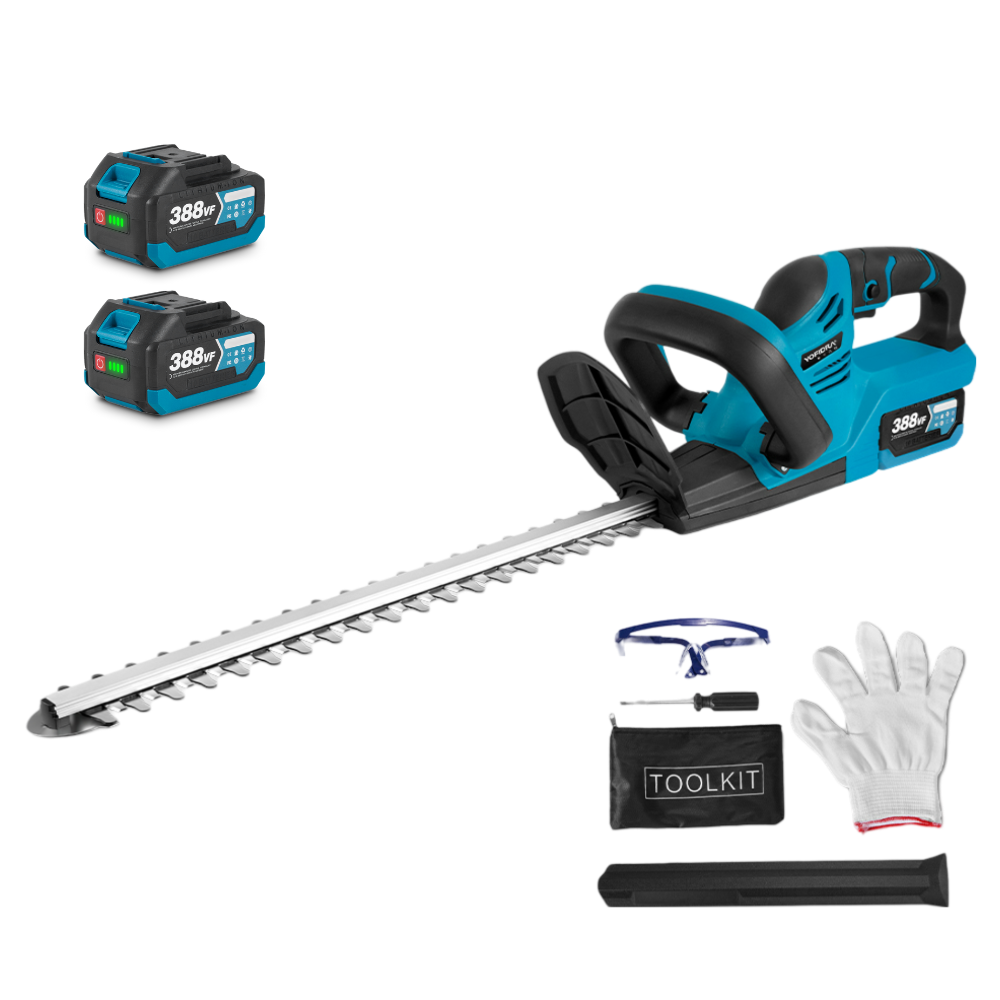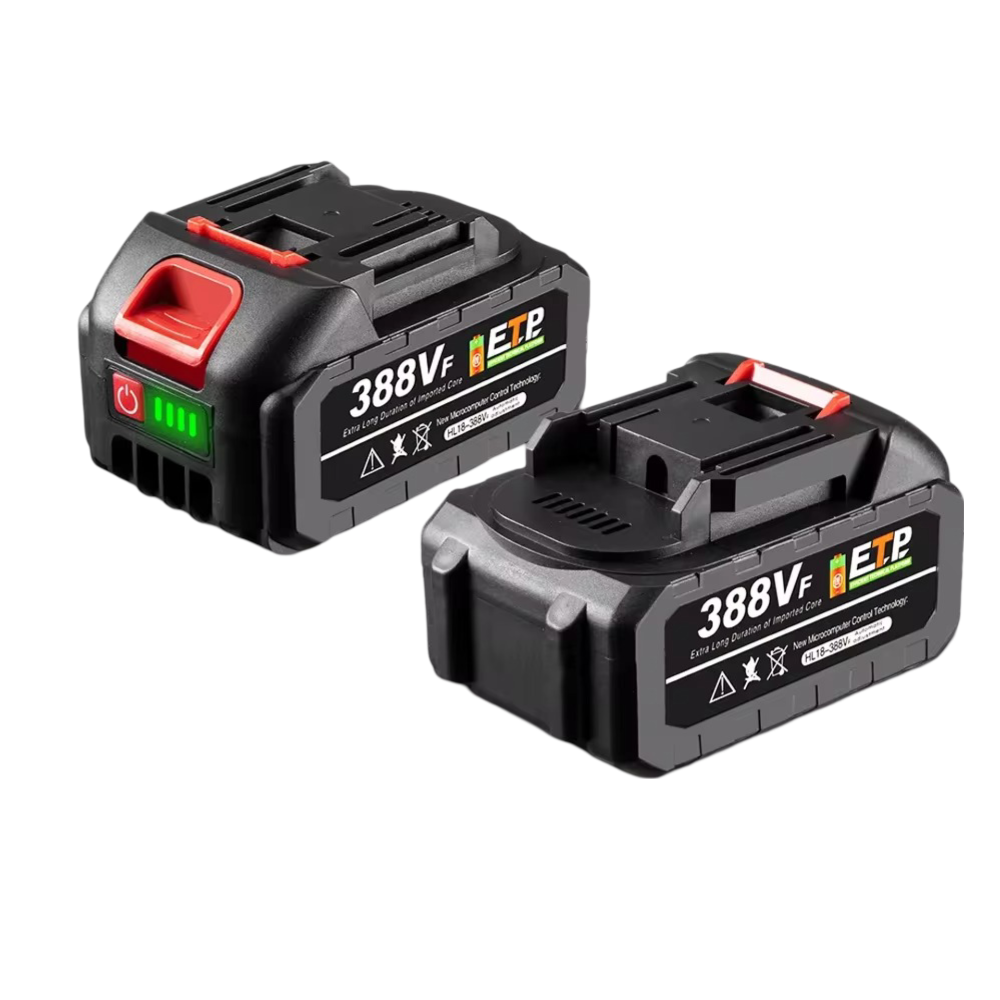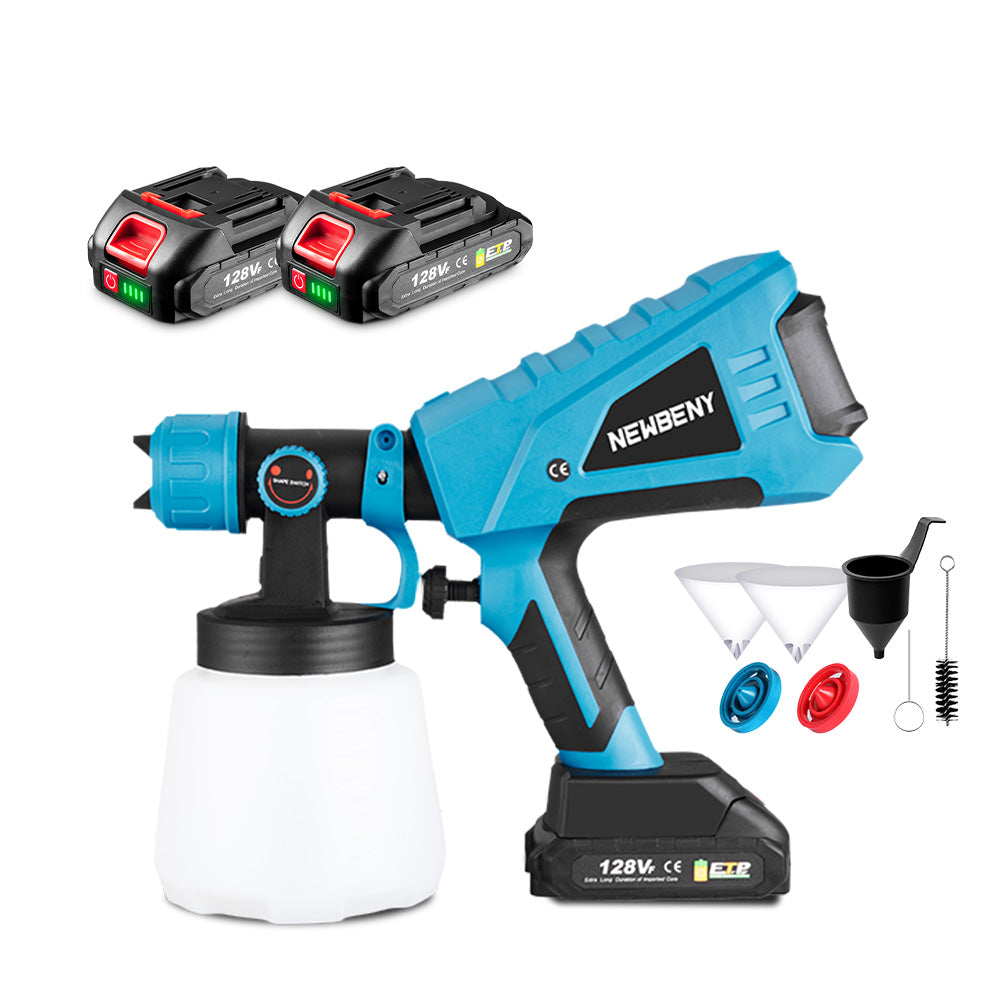One of the most common questions among cordless chainsaw users is how to properly adjust the chainsaw chain. So this is very important because adjusting your chainsaw chain properly is essential. Incorrect chain tension impacts both performance and safety. A well-adjusted chain cuts better, reduces risks, and extends the life of your equipment. Ignoring this vital step can lead to serious accidents and costly repairs.
NewBeny 8 Inch & 6 Inch Brushless Cordless Chainsaw comes with interchangeable guide bars and a built-in oil tank for easier maintenance.
1. Understanding Chainsaw Chains
To understand how to adjust chainsaw chains, you first need to know its basic components.
What is a Chainsaw Chain?
A chainsaw chain isn't just a simple loop of metal. It's a complex component designed for efficient wood cutting. It consists of several key parts:
Drive Links
Drive Links are the links that fit into the guide bar groove and are driven by the sprocket. They can be triangular or rounded in shape, depending on the chain style, and play a crucial role in the chain's movement.
Cutter Teeth
These are the sharp, hooked teeth that actually slice through the wood. There are several types of chains, including full chisel for fast cutting, semi-chisel for durability in dirty wood, and skip tooth for cutting larger logs effectively. Each type has its specific application suited to different cutting needs.
Tie Straps
These small links connect the drive links and cutters, holding the chain together.
Rivet Holes
These are the small holes where the rivets connect the various parts of the chain.
Depth Gauges
Regularly clean chains and sprockets using compressed air or a brush to remove sawdust, wood chips, and sticky sap. This should be done after every use or whenever you notice debris buildup.
Why Should You Adjust the Tension of the Chainsaw Chain?
Adjusting chain tension is not optional. It's essential for several reasons; let's read how.
1. Safety
Safety is paramount when operating any power tool, especially a chainsaw. Correct chain tension dramatically reduces the risk of dangerous incidents.
Preventing Kickback
A loose chain can cause kickback. This is a sudden, violent backward or upward thrust of the chainsaw. It happens when the chain's nose makes contact with an object while the chain is running too loosely or when the chain jams in the cut. A loose chain exacerbates this by allowing the chain to snag more easily or even jump off the bar. Kickback can lead to severe head, face, or upper body injuries.
Chain Derailment
A loose chain can derail from the guide bar. If it derails at high speed, it can whip back at you and cause severe cuts. However, an overly tight chain puts too much stress on the drive links, guide bar nose, and sprocket. You will notice that it increases the risk of chain breakage. A broken chain can become a high-speed projectile and endanger anyone nearby. Therefore, you need to learn how to adjust chain tension on a chainsaw.
2. Cutting Efficiency
Proper chain tension ensures your chainsaw performs at its best. As a result, this makes your work faster and more effective.
Smooth Operation
When you tension the chain correctly, it runs smoothly and steadily around the guide bar. This reduces friction and vibration. Consequently, you get a more comfortable and controlled cutting experience.
Consistent Depth of Cut
Optimal tension allows the cutter teeth to bite into wood effectively and evenly. This gives you a consistent depth of cut. Additionally, it prevents the chain from chattering on the wood surface.
3. Chain Wear and Longevity
Wrong tension speeds up wear on multiple parts. Therefore, this shortens the life of your chain and other components.
Reduced Wear on Chain and Bar
A chain that's too loose will slap against the guide bar. This causes excessive wear on the drive links and bar rails. Furthermore, it can also cause the guide bar to "mushroom" at the edges. Meanwhile, a chain that's too tight creates friction and heat. This leads to rapid wear on the drive links, guide bar groove, and sprocket. However, the right tension minimizes this friction and heat buildup.
4. Performance
Your chainsaw's overall performance is directly connected to the correct chain tension.
Optimal Power Transfer
When you adjust the chain properly, the engine's power transfers efficiently through the sprocket to the chain. This means your chainsaw can deliver its full cutting potential. If the chain is too loose, you lose power to slippage and vibration. Conversely, if it is too tight, the engine struggles and reduces effective power.
Better Handling
A correctly tensioned chain contributes to your chainsaw's overall balance and handling. It feels more stable and predictable during operation. Therefore, this allows for greater precision and control, especially during detailed cuts.
5. Ease of Use
Finally, a properly adjusted chain simply makes your work easier and less tiring. You'll experience less fatigue. Also, your chainsaw will feel more stable. Plus, the cutting will be more enjoyable and less frustrating. This is true for heavy-duty professional models and compact cordless chainsaw units alike.
2. How to Adjust Chainsaw Chain
Knowing how to adjust chainsaw chain tension is a fundamental skill for any chainsaw operator. You will read this in detail below.
Tools You Will Need
Before you start, gather these essential tools. Most chainsaws, such as those from Husqvarna or Stihl, come with a basic tool kit that includes all the necessary items.
Scrench
This multi-tool is typically supplied with your chainsaw. One end usually serves as a spark plug wrench and bar nut wrench, while the other acts as a flathead screwdriver for the tensioning screw.
Flathead Screwdriver
If your scrench doesn't fit the tensioning screw well, a dedicated flathead screwdriver with a suitable tip size will be beneficial.
Work Gloves
You need these to protect your hands from sharp chain teeth and cuts. First, get durable leather work gloves or cut-resistant gloves.
Safety Goggles
Next, you need eye protection from debris, wood chips, and chain snaps. DeWalt or 3M make good safety eyewear.
Chain Tension Gauge
However, you don't need this for basic adjustment. Still, a tension gauge gives exact measurements. It helps beginners learn the right tension. Additionally, professionals use them for precise settings.
Safety Precautions
Before you touch anything, put safety first. This is the number one rule for chainsaw work and maintenance.
1. Wear the Right Safety Gear
Do this even for maintenance. The chain teeth are sharp and can hurt you even when the saw is off.
2. Make Sure the Chainsaw is Off
This step is required.
Gas Chainsaws: First, turn the engine switch to "OFF." Then, disconnect the spark plug wire from the spark plug. This stops accidental starts while you work on the chain.
Electric Chainsaws: Simply unplug the chainsaw from the power outlet.
Battery Chainsaws: Remove the battery pack from the tool. Don't assume the tool is off just because you're not pressing the trigger.
3. Let the Chainsaw Cool Down
If you just used the chainsaw, the engine, guide bar, and chain are hot. Therefore, let it cool down before you handle it.
3. Step-by-Step Guide to Adjust Chainsaw Chain Tension
This guide will show you how to properly adjust chainsaw chain tension.
Step 1: Prepare the Chainsaw
Good preparation makes the job safe and easy.
Power Down and Cool
Make sure the chainsaw is off. Disconnect the spark plug or remove the battery, then wait for a few minutes to allow the device to cool before proceeding.
Clean the Area
Remove sawdust, wood chips, and debris from around the guide bar, chain, and sprocket. Use a brush, or you can also use compressed air. Debris gets in the way of good tensioning.
Loosen Bar Nuts
Find the two bar nuts that hold the guide bar and side cover. Some chainsaws have one large knob instead. Use your scrench to loosen these nuts just enough so the guide bar can move free. Don't make it loose. You don't need to remove them unless your chainsaw manual says to.
Step 2: Check the Current Chain Tension
Check the tension first. This indicates whether you need to tighten or loosen the chain.
1. Look at the Chain
Check the chain along the bottom of the guide bar. It should sit tight in the groove with no sag. If you see a big gap between the chain and the bar, it's too loose.
2. The Pull Test
This is the best way to check tension. Grab the chain by one cutter tooth on the bottom of the guide bar, near the middle. Pull the chain away from the guide bar.
Right Tension: You should pull the chain away from the bar slightly, ensuring it remains seated in the groove without excessive slack, typically allowing for a slight gap but not pulling out drive links.When you let go, the chain should return smoothly into the groove without excessive slack, indicating that the tension is proper.
Too Loose: You can pull out three or more drive links, or the whole bottom sags. The chain is too loose.
Too Tight: You can barely pull the chain from the bar, or it doesn't snap back. It's too tight.
3. Check Chain Movement
With the bar nuts loose, turn the chain by hand around the guide bar.
Right Tension: The chain moves freely and smoothly around the whole guide bar. It takes moderate effort.
Too Tight: The chain is stiff, binds, or is hard to move. It's too tight.
Too Loose: The chain rattles loose in the groove. It's too loose.
Step 3: Adjusting the Chain Tension
Find the Tensioning Screw
Locate the chain tensioning mechanism, which could be a screw or a lever, often found on the side of the chainsaw near the guide bar. Refer to your specific model's manual for exact details.
Lift the Guide Bar Tip
When you adjust the tension, lift the tip of the guide bar. This removes slack from the bottom of the chain. It makes sure tension stays even across the whole loop when you tighten the bar nuts. Skip this step, and the chain will look tight but loose when the bar nuts are tight and the bar settles.
Check Your Work
Make small changes. Turn the screw a quarter turn. Then, check the tension with the pull test and chain movement test. Do this until the tension is right. The chain is ready when you can pull out one or two drive links. The chain snaps back firmly and moves free.
Tighten Bar Nuts Firmly
Once the tension is correct, while still holding the guide bar tip up, firmly tighten the two bar nuts with your scrench. These nuts must be very tight to prevent the guide bar from slipping during operation, which would quickly cause the chain to loosen.
Step 4: Recheck the Tension
This final check is important.
Double-Check After Tightening
After tightening the bar nuts, it's good practice to perform one final pull test and rotate the chain by hand. Sometimes, the act of tightening the nuts can slightly alter the tension. It should be perfect.
Final Spin
Give the chain a few spins around the guide bar by hand. It should move freely without any binding or tight spots, and the drive links should remain seated perfectly in the guide bar groove.
Replace Cover
Once you are completely satisfied with the tension, replace the side cover or chain cover and tighten any associated screws. For gas models, reattach the spark plug wire. For Cordless Chainsaw models, reinsert the battery.
4. How to Adjust the Chainsaw Blade
When people ask how to adjust chainsaw blades or how to adjust chainsaw blade tension, they are generally talking about the guide bar.
Importance of Blade Adjustment
While chain tension directly affects the chain, the condition and alignment of the guide bar are equally vital.
1. Enhanced Cutting Performance
Alignment with Chain Tension
A worn or misaligned guide bar can prevent even the most perfectly tensioned chain from cutting effectively. The bar provides a rigid track for the chain. If the bar is bent, worn unevenly, or has burrs, the chain cannot run smoothly or maintain proper contact with the wood.
2. Safety and Control
The guide bar is a critical safety component. Its condition directly impacts kickback prevention and operator control.
Balance Between Tension and Blade Position:
A guide bar with worn rails or a damaged nose can cause the chain to bind or jump, thereby increasing the risk of kickback. Correct guide bar maintenance ensures the chain remains properly seated and guided.
3. Minimized Wear and Tear
A guide bar with worn rails or a pinched groove forces the chain to work harder. This increases friction and wear on the drive links and sprocket. It is good to regularly clean and inspect the guide bar to reduce this strain.
Preventing Damage
Neglecting the guide bar can lead to permanent damage to both the bar and the chain. For example, a worn-out bar nose sprocket (if your bar has one) can seize, causing the chain to stop abruptly and potentially break.
4. Efficiency in Operation
Complementary Adjustments
Adjusting both the chain and ensuring the guide bar is in good condition are complementary tasks. You can't have one without the other for optimal efficiency. A well-tensioned chain cannot compensate for a damaged or worn guide bar, which can lead to inefficiency in cutting and increase the risk of kickback.
Improved Power Consumption
Cordless chainsaws perform better when the guide bar and chain are in good condition and properly adjusted. Less friction means faster cuts and potentially longer battery life.
5. Enhanced Precision and Finish
For tasks requiring precision, the condition of the guide bar is paramount.
Quality of Cuts
If a guide bar is well-maintained, it allows the chain to cut cleanly and accurately. This is essential for felling trees, bucking logs, and carving.
Minimized Splintering
Smooth chain travel guided by a good bar reduces splintering and tear-out, resulting in a cleaner finish on the cut wood.
5. Common Issues When Adjusting Chainsaw Chain
Even with a clear guide, you can face some challenges when trying to adjust chain tension on a chainsaw. We have listed some frequent problems and their solutions.
Problem 1: Chain Slips After Adjustment
This is quite a frustrating issue that often indicates an underlying problem with your adjustment.
Cause 1: Bar Nuts Not Tight Enough
The most frequent cause. If the bar nuts aren't tightened firmly enough after adjustment, the guide bar can shift backwards during operation, instantly loosening the chain.
Solution: Ensure the bar nuts are extremely tight once the chain tension is set. Use significant force with your scrench.
Cause 2: Worn Bar Nuts or Studs
Over time, the threads on your bar nuts or the studs they screw onto can wear. This prevents secure tightening.
Solution: First, inspect the nuts and studs for stripped threads. Then, replace them if necessary.
Problem 2: Difficulty in Adjusting Chain Tension
Sometimes, the adjustment screw simply won't cooperate.
Cause 1: Debris in the Tensioning Mechanism
Sawdust, wood chips, and dried sap can pack into the adjustment screw's threads or your guide bar's adjustment holes. This makes it stiff or impossible to turn.
Solution: Remove the side cover and guide bar. Then, clean all debris from the tensioning mechanism, the adjustment screw, and the guide bar's adjustment holes. Use a small brush, pick, or compressed air.
Cause 2: Guide Bar Stuck
Your guide bar might be wedged tight in its mounting slots. This prevents it from moving forward or backwards for tension adjustment. This often happens if you over-tighten the bar nuts without proper lubrication or if debris is caught.
Solution: First, loosen the bar nuts completely. Then, try wiggling the guide bar to free it. You might need to tap it with a rubber mallet. Finally, clean the guide bar mounting area.
Problem 3: Chain Breakage
Chain breakage is a serious and dangerous event.
Cause 1: Over-tightening
Solution: Always follow the pull test guidelines. Never over-tighten. Your chain should be snug but still move free.
Cause 2: Worn or Damaged Chain
Chains wear out over time. Cutter teeth get too small, drive links develop cracks, or rivets become loose.
Solution: Check your chain for signs of wear, cracks, or damage. Replace a worn or damaged chain right away.
6. Tips for Proper Chainsaw Chain Maintenance
Beyond knowing how to adjust a chain on a chainsaw, regular maintenance is key to safety and longevity.
1. Regular Inspections
Every Few Hours of Use
Especially new chains will stretch with use, so check the tension regularly after cutting or if you notice a change in the cutting performance.
2. Cleaning and Lubrication
Clean Regularly
The guide bar groove and chain links can become clogged with sawdust, wood chips, and sticky sap. Using a flathead screwdriver or a groove cleaner can remove the buildup. Use compressed air or a brush to clean the chain and sprocket.
Proper Lubrication
Your guide bar and chain require constant lubrication to reduce friction and heat.
3. Check Automatic Oiler
Check the Automatic Oiler by running the chainsaw at medium speed. It should produce a thin line of oil when held a few inches from the guide bar tip. If there is no oil, inspect the oiler for blockages or malfunctions.
4. Use Quality Bar and Chain Oil
Always use a dedicated bar and chain oil. This oil is specially made to be sticky and cling to your chain. It resists being flung off during high-speed rotation. Never use old motor oil, as it lacks the necessary tackiness and lubrication properties.
5. When to Replace the Chain
Knowing when to replace a chain is crucial for safety and efficiency, and it is important to recognize that chain adjustment is a more frequent maintenance task compared to replacement. Using a worn-out chain is inefficient and dangerous.
6. Dullness After Sharpening
If you've sharpened your chain multiple times but it no longer holds an edge or requires excessive force to cut, the cutter teeth are worn down to their wear indicators or are too small to be effective.
7. Damaged Drive Links
Any missing, bent, or cracked drive links or loose and damaged rivets are red flags. Such a chain is a serious safety hazard and must be replaced.
8. Excessive Stretching
If you find yourself constantly having to adjust chain tension on chainsaws because it rapidly loosens after only a few minutes of use, your chain has stretched beyond its safe operating limit.
9. Visible Cracks on Links
Even small cracks on any part of your chain link indicate metal fatigue and a high risk of failure. Replace it right away.
10. Uneven Wear
If your cutter teeth are unevenly worn (one side is much shorter than the other), it can cause the saw to cut crooked. While sometimes fixable with careful sharpening, severe unevenness typically indicates that replacement is necessary.
7. Conclusion
Learning how to adjust chainsaw chain tension is very important for a chainsaw user. It directly impacts your safety. It also affects the efficiency of your cutting tasks. Additionally, it impacts the longevity of your equipment. This is true whether you have a powerful gas model or a convenient cordless chainsaw.
8. FAQs
1. How often should I adjust my cordless chainsaw chain?
You should check your chain tension before each use. New chains need adjustment more often during their first few hours of use. Additionally, check the tension after every few hours of cutting. If you notice changes in cutting performance, check it right away.
2. What happens if my cordless chainsaw chain is too loose?
A loose chain can derail from the guide bar. This creates a serious safety hazard. Furthermore, it can whip back at you and cause severe cuts. Also, a loose chain reduces cutting efficiency. It causes excessive wear on your guide bar and chain components.
3. How does temperature affect chainsaw chain tension?
Temperature changes affect chain tension. Cold weather makes the metal contract. This can make your chain tighter. Hot weather makes metal expand. This can make your chain looser. Therefore, check tension when the chainsaw reaches normal operating temperature.
4. What is the ideal tension for a chainsaw chain?
The ideal tension allows you to pull out one or two drive links from the guide bar groove. When you release the chain, it should snap back firmly. Additionally, the chain should move freely around the guide bar with moderate effort. It should not sag or bind.
5. Can I adjust my chainsaw chain while it is still warm?
No, you should not adjust a warm chain. First, let your chainsaw cool down completely. Hot chains and guide bars can burn you. Also, hot metal expands. This gives you an inaccurate tension reading. Always wait for the chainsaw to reach room temperature.
6. What should I do if my chainsaw chain does not tighten?
First, check for debris in the tensioning mechanism. Clean out sawdust and wood chips. Then, make sure the guide bar is seated properly. If the problem continues, check for worn bar nuts or studs. Finally, inspect the tensioning screw for damage. Replace worn parts as needed.
7. How often should I lubricate my chainsaw chain when adjusting tension?
Check your automatic oiler before each use. Make sure it produces a thin line of oil. Use quality bars and chain oil only. During extended cutting sessions, check oil levels every few hours. Additionally, clean the guide bar groove regularly to ensure proper oil flow.









